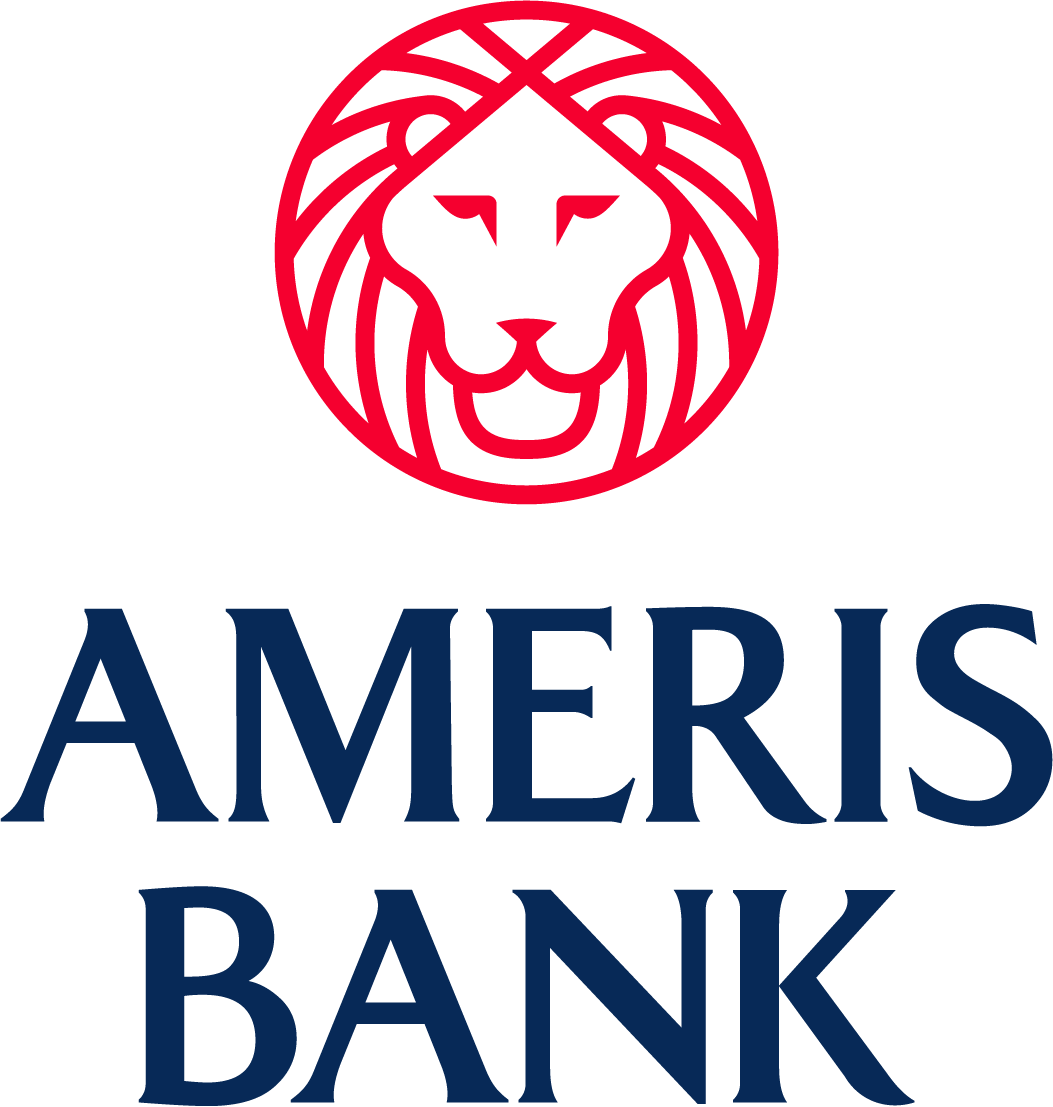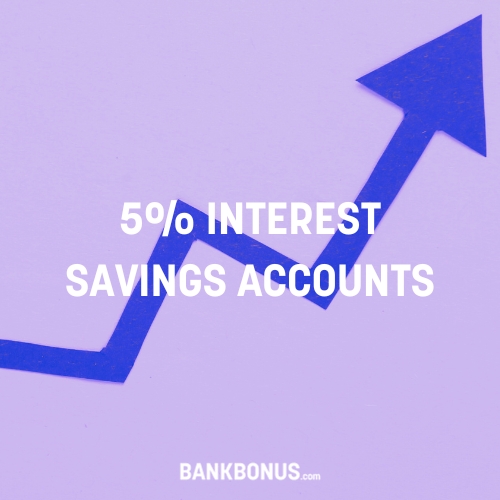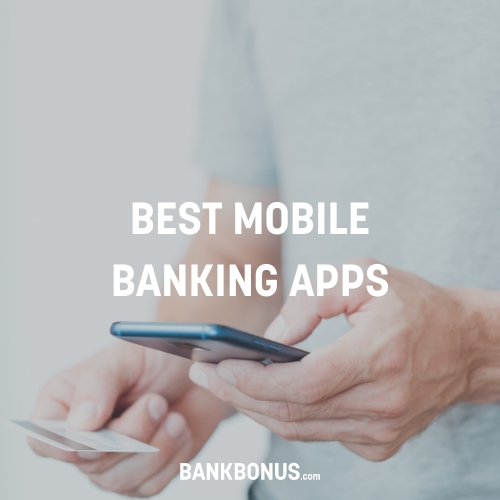I’ve always loved traveling to Georgia, and Atlanta was one of my favorite spots on my book tour. The Peach State hosts some of the best banks in the country, with a wide selection of quality local, regional, and national banks.
To help you choose the right one, our editorial team has evaluated dozens of banks and identified the best banks in the state.
Read on for an overview of the best banks in Georgia, including their pros and cons and what you need to look out for when choosing a bank.
10 Best Banks in Georgia
Here are the best banks in Georgia to open an account with today. To determine which banks made the list, we evaluated their accessibility, key features, account variety, fees, and customer service:
- First Citizens Bank: Best Checking Accounts
- Ally Bank: Best Online Bank
- Chase Bank: Best National Bank in GA
- United Community Bank: Best Regional Bank in GA
- Bank of America: Best Mobile Banking
- Regions Bank: Best for Account Rewards
- Ameris Bank: Best Bank for Businesses
- CIT Bank: Best Savings Accounts
- Fifth Third Bank: Best Customer Service
- PNC Bank: Best ATM Access
See the Best Bank Bonus Offers & Promotions in Georgia
1. First Citizens Bank 
Best: Checking Accounts
First Citizens Bank (not to be confused with Citizens Bank) is owned by First Citizens BancShares, which is the 15th largest bank in the nation. It has 52 locations across Georgia.
The bank has a versatile lineup of financial products, including bank accounts, credit cards, loans, mortgages, investment services, retirement products, and insurance.
It also provides account holders with an excellent mobile banking experience, based on its wealth of positive app store reviews.
Accounts
First Citizens Bank has accounts for individuals, along with small business and commercial bank accounts. It tops our list of the best checking accounts in Georgia.
You can choose from three individual checking accounts, with a free account and two premier accounts that provide bonus features like preferred interest rates and have waivable monthly fees.
Additionally, you can open a savings account with no monthly fees and no minimum balance, which earns some interest. The bank also offers a handful of CD accounts and money market accounts.
Pros:
- Free accounts
- Several branches in Georgia
- Account variety
Cons:
- Minimum deposit for some accounts
- Mediorcore APY on savings
Learn more:
2. Ally Bank 
Best: Online Bank
Ally is an online bank with no physical presence in Georgia (or anywhere else). Since it doesn’t have any branches to maintain, it’s able to offer fee-free accounts with industry-leading interest rates.
It also excels at user experience, providing accountholders with an easy-to-use mobile app that has perks like Zelle payments, budgeting insights, and instant transfers between Ally accounts.
You can find several deposit accounts, IRAs, credit cards, and loans at Ally.
Accounts
Ally Bank offers interest-bearing checking and savings accounts, MMAs, and CDs, though it doesn’t have any business accounts.
The Ally Spending Account pays a competitive APY and offers 2-day early pay, overdraft protection, and out-of-network ATM reimbursements. Plus, it has no monthly fees or account minimums.
Ally’s Savings Account also pays high interest rates and allows you to set up recurring transfers and round-ups on Ally Spending Account debit card purchases to accelerate your savings goals.
Pros:
- Competitive interest
- Free overdraft protection
- 43,000+ free ATMs
Cons:
- No branches
- No cash deposits
Learn more:
3. Chase Bank 
Best: National Bank in GA
Chase Bank is the consumer banking arm of JPMorgan Chase, the biggest bank in the US. It has more than 100 locations throughout Georgia, with the bulk in Atlanta.
In addition to offering excellent in-person support, the Chase app has a solid customer rating on the App Store and Google Play Store.
Chase has a wide range of products and services for individuals and businesses, with some of the best welcome bonus offers in the industry. Chase also stands out for its impressive lineup of credit cards.
Accounts
Chase offers a handful of checking accounts, with its most popular option being the Total Checking Account. It features benefits like free credit reports, Zelle transfers, bill pay, and mobile deposits.
Chase also offers both a Basic and Premier Savings Account, which have waivable monthly fees. These accounts earn interest, but you can find higher rates with Chase’s CDs.
Pros:
- Rewarding welcome bonuses
- Large selection of credit cards
- Widespread availability
Cons:
- Account fees
- Low APY on savings accounts
Learn more:
| Bank | Bonus | Expires | Requirements | |
|---|---|---|---|---|
| $300 | July 24, 2024 |
|
Learn More |
4. United Community Bank 
Best: Regional Bank in GA
United Community Bank is a regional bank servicing the Southeast that was launched in 1949 in Blairsville, Georgia. Today, the bank is headquartered in Greenville, South Carolina. It operates dozens of branches in Georgia and has an extensive ATM network, including Publix Presto ATMs.
It’s our favorite regional bank in Georgia, providing you with a community bank and branch access as you travel throughout the Southeast. In addition to bank accounts, you can access mortgages, loans, credit cards, and wealth management services.
Accounts
United Community Bank offers a wide range of checking accounts, with specialized accounts for seniors and children, which have no service charge. Monthly charges on other accounts are relatively easy to waive.
You can also find savings accounts, CDs, and MMAs. The bank’s savings account rates are on par with other traditional banks.
Additionally, United Community Bank features checking and savings accounts, loans, and several additional services for businesses.
Pros:
- Wide ATM network
- Easily waivable monthly fees
- Low account balance requirements
Cons:
- Limited national reach
- Lackluster APY on savings
Learn more:
5. Bank of America 
Best: Mobile Banking
Bank of America is the second-largest bank in the US. While it is headquartered in North Carolina, the bank has 72 branch and ATM locations throughout Georgia.
We recommend Bank of America most for its outstanding mobile banking experience. It has over 5.4 million app reviews, with an average rating of 4.8 in the App Store and 4.6 in the Google Play Store.
Accounts
Bank of America offers personal and business bank accounts. Individuals can open a SafeBalance checking account for beginners, or an Advantage Plus account, which has perks such as overdraft protection, mobile deposits, check writing, and budgeting tools. Additionally, the Advantage Relationship account earns interest and reduces fees. All of these accounts have waivable monthly fees.
Bank of America also offers a savings account, with enhanced benefits for Preferred Rewards members, like waived monthly fees and higher interest APY. Additionally, the bank offers credit cards, CDs, loans, and investment services.
Pros:
- Rewarding welcome bonuses
- Large selection of accounts
- Excellent customer ratings
Cons:
- Account fees
- Low APY rates
Learn more:
6. Regions Bank 
Best: Account Rewards
Regions Bank is a regional bank that serves states in the Midwest and South. It operates close to 2,000 ATMs in the states it serves. It provides deposit accounts, credit cards, investment products, loans, and financial planning services.
While other banks offer higher interest rates, it’s one of our top picks for rewards. When you enroll in Regions Offers, you’ll routinely get extra cashback offers on debit and credit card purchases at select retailers. LifeGreen Checking Accounts also come with safe deposit box discounts, relationship rates on CDs, and installment loan discounts.
Accounts
Regions offers a large selection of checking accounts with waivable monthly fees ranging from $5 to $18. Minimum opening deposits vary, and there are specialized accounts for students and seniors.
Three of Regions Bank’s four savings accounts have no monthly fees. The APY rate isn’t the most competitive, but the Regions Now savings account pays monthly and annual bonus interest when you meet minimum requirements.
Additionally, individuals can open CD and MMA accounts, and businesses can access several bank accounts, loans, and tailored services.
Pros:
- Free savings account
- Rewards and discounts
- Several checking accounts
Cons:
- Low flat APY rate
- Steep overdraft fee
Learn more:
7. Ameris Bank 
Best: Bank for Businesses
Ameris Bank is a regional bank offering full-banking services in Georgia, Alabama, Florida, North and South Carolina, Maryland, Tennessee, and Virginia. The bank is headquartered in Atlanta and has over 200 branches in the Southeast.
We recommend it most for its wide variety of products for businesses, which includes specialized services for small businesses, commercial operations, municipalities, associations, nonprofits, and agribusiness services.
Accounts
Ameris stands out most for its lineup of business bank accounts and services, which includes checking and savings accounts, CDs, and MMAs, as well as loans, credit cards, and treasury services.
In terms of personal accounts, Ameris Bank offers a free checking account with limited benefits, along with two premium accounts with waivable monthly fees.
Their savings account comes with a waivable quarterly service fee. It requires a minimum balance to earn interest, and withdrawals are limited to six every three months. You can also open personal CDs with varying terms and MMAs.
Pros:
- Free account options
- Extensive business products
- Zelle compatibility
Cons:
- Minimum balance to earn interest
- High overdraft fees
Learn more:
8. CIT Bank 
Best: Savings Accounts
CIT Bank is a subsidiary of First Citizens BancShares – one of the largest banks in the US. As an online-only bank, CIT Bank doesn’t have any branches; however, you can manage your accounts in the mobile banking app, which is highly rated by Apple users, although it has mixed reviews in the Google Play store.
Accounts
CIT Bank offers one checking account called eChecking. This account comes with no monthly fees or overdraft fees, and it pays tiered interest on account balances.
CIT stands out for its high-yield savings account options. You can choose from three savings accounts, including the Savings Connect Account which pays 4.65% APY on all account balances. Just note that CIT’s savings accounts have a $100 minimum opening deposit.
CIT Bank doesn’t offer any credit cards or business bank accounts, but it does have CDs, home loans, and MMAs for individuals, along with business financing solutions.
Pros:
- Great interest rates
- Free accounts
- Overdraft coverage
Cons:
- No credit cards
- Minimum opening deposits
Learn more:
9. Fifth Third Bank 
Best: Customer Service
Fifth Third Bank is a regional bank servicing 11 states in the Midwest, including Georgia. The bank operates close to 2,500 ATMs and just over 1,000 branches.
It outscored the industry average in J.D. Power’s 2023 U.S. Retail Banking Satisfaction Study for banks in the Southeast. Due to this rating, its accessibility, customer reviews, and high mobile app ratings, it’s our top choice for customer service in Georgia.
Accounts
Fifth Third has checking accounts, savings accounts, CDs, MMAs, loans, insurance, credit cards, and investment accounts for individuals, as well as numerous business bank accounts.
Its standard checking account packs a punch with no monthly fees, no minimum balance requirements, and an overdraft grace period. You can get earlier access to your paycheck, and if you deposit a check, you can get instant access to funds, although fees may apply to use this feature.
Fifth Third’s savings account comes with a $5 monthly charge, but there are multiple ways to avoid it, including having a qualifying checking account. The APY isn’t the most impressive, but the account comes with features such as Smart Savings to help you reach your financial goals faster.
Pros:
- Free checking account
- Large branch/ATM network
- Savings tools
Cons:
- Low APY rate
- High overdraft fees
Learn more:
10. PNC Bank 
Best: ATM Access
PNC Bank is one of the largest banks in the US. It operates in several states across the US, with close to 60,000 ATMs and over 2,300 branches. PNC Bank scored our vote for the best ATM access, as you can easily make free withdrawals when you’re at home or traveling across the country.
As a large full-service bank, PNC offers a wide variety of products for businesses and individuals, from bank accounts to loans, credit cards, and investments.
Accounts
PNC recently upgraded its checking account to Virtual Wallet, combining a checking account and savings account. This hybrid account gives you access to features like Low Cash Mode, which helps you customize your overdraft policy, and digital tools for tracking and automation.
There are three tiered Virtual Wallet accounts to choose from, each of which earns interest on your savings balance. Monthly fees start at $7.00, with many options available to waive the fee.
You can also open individual checking and savings accounts, CDs, and MMAs.
Pros:
- Easy account management
- Grace period for overdrafts
- Excellent digital banking features
Cons:
- Steep overdraft fee
- Low rates on some savings balances
Learn more:
Credit Unions in Georgia
If none of the banks above are what you’re looking for, you might want to consider a credit union instead. Credit unions work just like banks, but they are not for profit. You’ll need to become a member rather than a customer, and their service tends to be more personalized.
To become a member, you need to have a connection to the credit union. Most often, this is the place of work or where you live. Wings Financial and Navy Federal Credit Union are good options for those looking for a quality credit union in Georgia.
Remember, you will need to review the membership requirements to determine eligibility. You can also check with your employer and others in your community to get a better sense of what credit unions you have access to.
How To Choose the Best Banks in Georgia
At BankBonus.com, we’re committed to providing consumers with the resources they need to select a bank or credit union. Here’s an overview of the steps we recommend our readers take to choose a bank:
- Understand different types of banks: You have access to traditional banks, online banks, credit unions, and neobanks. It’s important to understand the differences between them and determine which type of institution aligns best with your preferences.
- Choose the right account: Checking, savings, money market, and certificate of deposit accounts are the most common types of bank accounts. Understand what each offers and choose a bank with the type of account(s) you need.
- Look for low-fee banks: Account fees can add up quickly. As you compare bank accounts, look for an account that doesn’t charge unavoidable monthly maintenance fees, overdraft fees, and ATM fees.
- Consider branch and ATM access: If having access to branches matters to you, choose a bank with physical locations. Regardless, you should prioritize banks that have a vast ATM network or reimburse ATM fees.
- Compare account features: Determine which features you’re looking for. A few common bank account features to consider are interest, cashback, mobile features, cash deposits, and minimum account balance requirements.
- Check out reviews and ratings: It’s crucial to pick a reputable bank. To get an idea of a bank’s customer experience, you can read expert reviews and look to sources like TrustPilot, the Better Business Bureau, and J.D. Power.
- Read the fine print: Don’t sign up for an account without understanding the terms and conditions. Make sure the account is FDIC or NCUA insured and get a sense of its requirements, fees, and expiration dates for bank bonuses.
- Look at the bank’s additional products: If you want to manage all of your finances under one roof, look into each bank’s additional products. A lot of banks also offer credit cards, wealth management, investment accounts, and loans.
Read our full guide to choosing a bank here
Our Methodology
The BankBonus team has analyzed dozens of banks to provide our readers with thoroughly informed and accurate reviews.
We evaluated digital financial platforms, online banks, regional banks, and national banks with a presence in Georgia.
Our assessment of each bank factors in these considerations:
- Product lineup: We review the types of accounts, loans, and services offered by each bank, as well as the number of accounts.
- Fees and pricing: We also consider each institution’s fees, including monthly maintenance fees and other service charges.
- Account features: To compare banks, we take a close look at the features, limits, and capabilities each one has to offer.
- Interest: Along with these features, we consider whether or not the bank offers interest-bearing accounts and compare their rates to industry averages.
- Brand reputation: The bank accounts we recommend have been carefully vetted to ensure they are legitimate, secure, and backed by FDIC insurance.
- User experience: Additionally, we consider the ease of use and availability of resources on each bank’s website and factor in reviews of the mobile app from the Apple App Store and Google Play Store.
- Branch and ATM access: To gauge convenience, we also look at each bank’s branch and ATM availability and consider their ATM reimbursement policies.
- Customer service: In our review process, we also explore their customer service channels, hours of availability, and third-party reviews.






Comments are closed.
Comments are closed here.